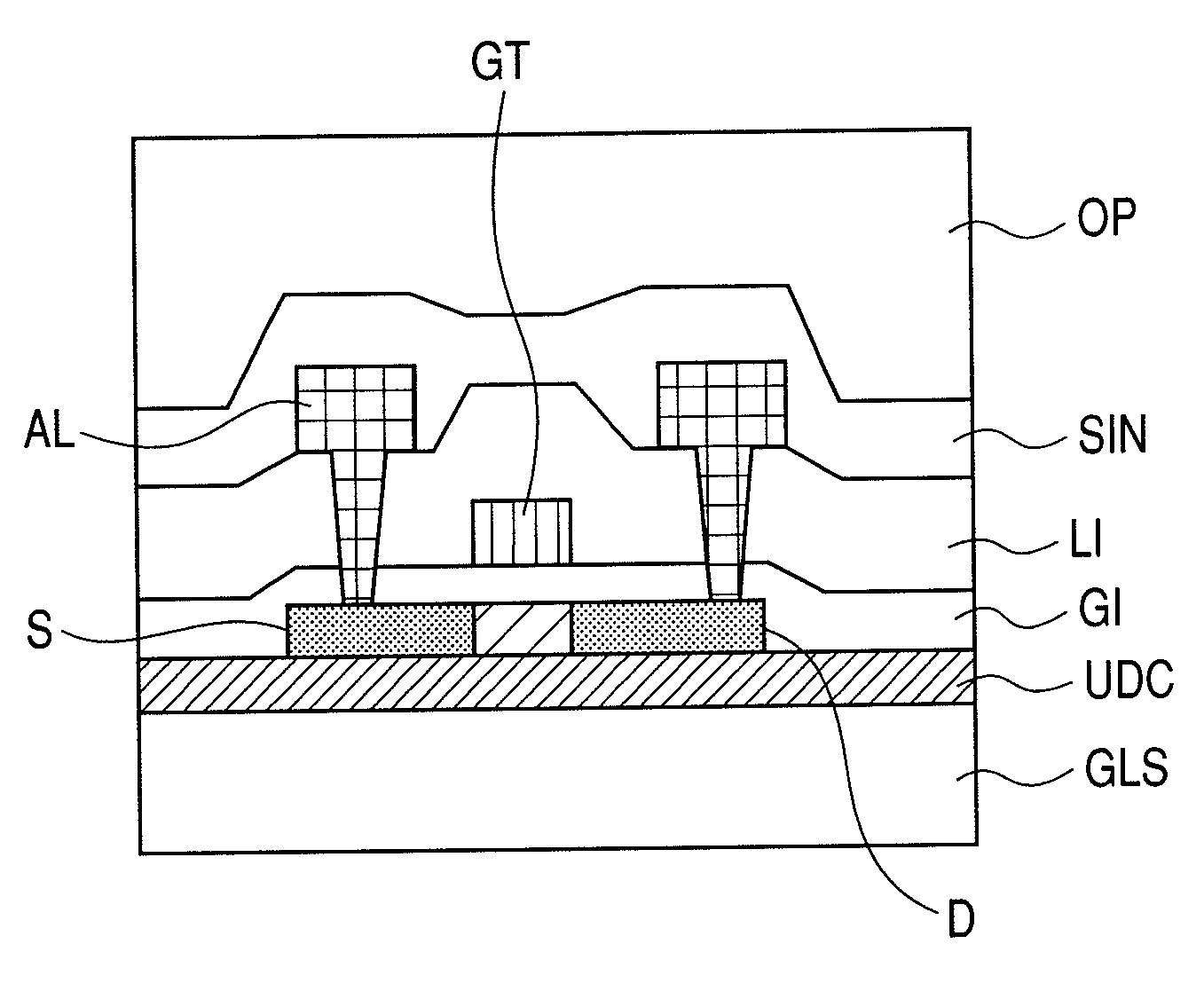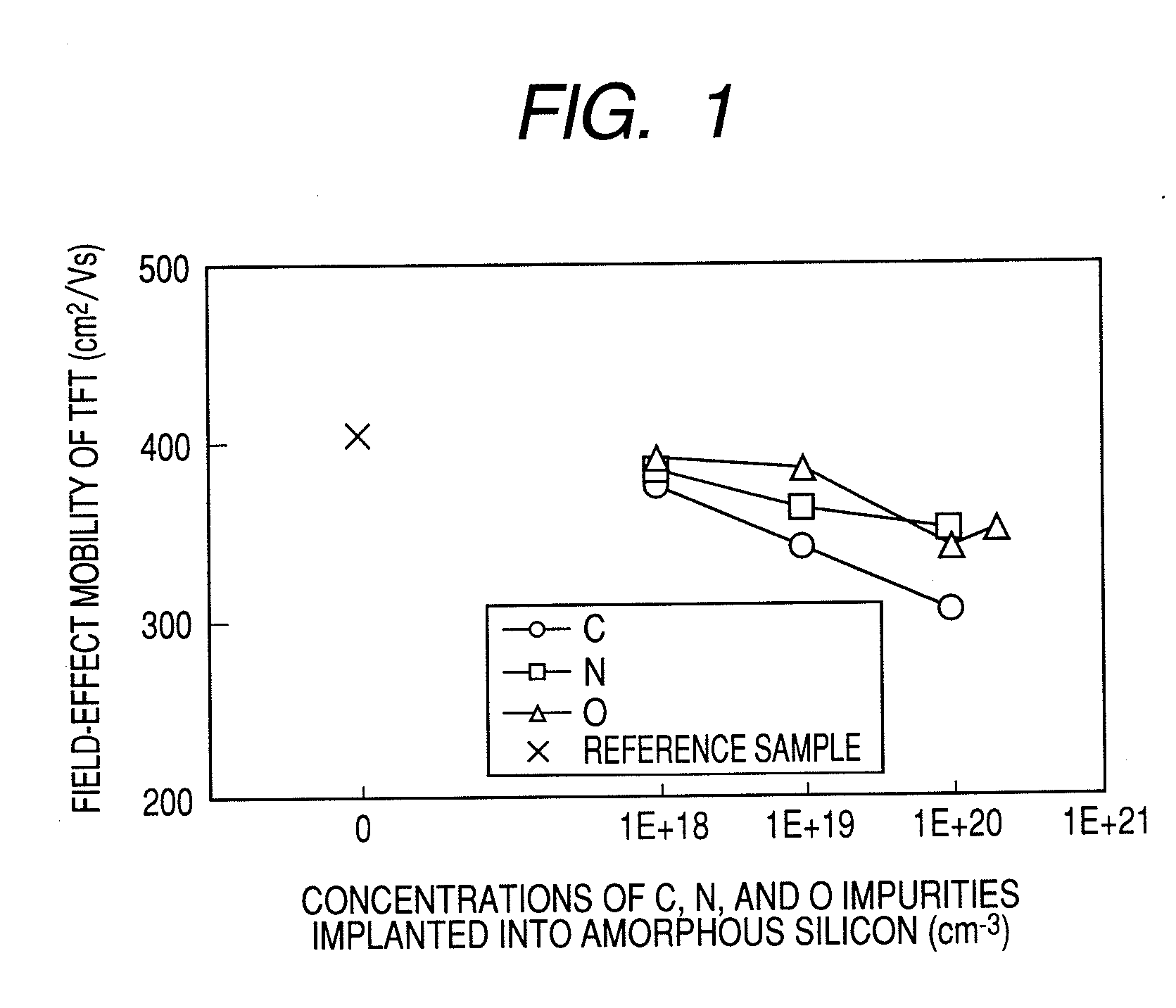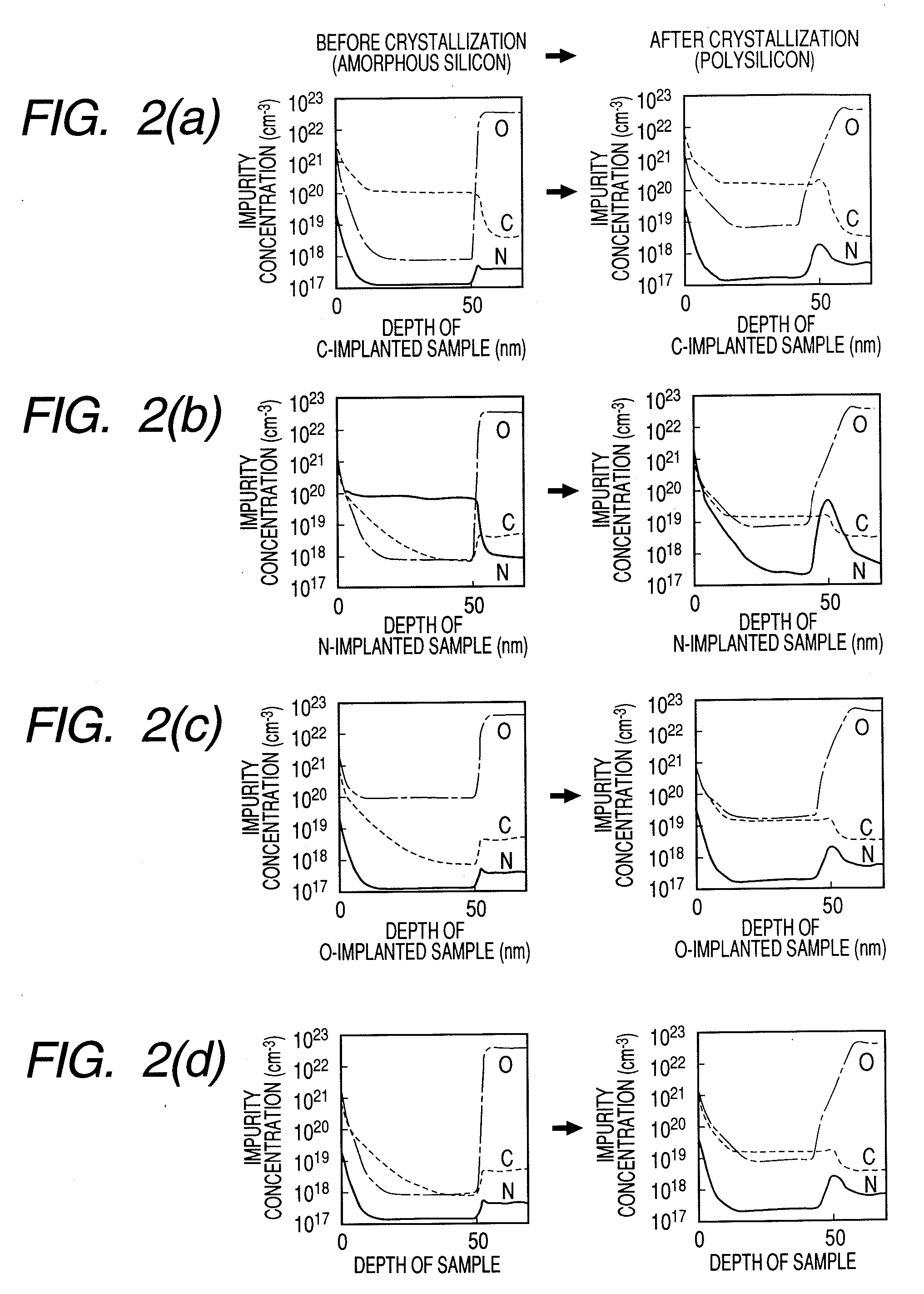Semiconductor device and method for manufacturing the same
a semiconductor and display device technology, applied in the direction of solid-state devices, coupling device details, coupling device connections, etc., can solve the problem of difficult application of vacuum consistent process to large substrates, and achieve the effects of low resistance, high mobility, and convenient crystal recovery
- Summary
- Abstract
- Description
- Claims
- Application Information
AI Technical Summary
Benefits of technology
Problems solved by technology
Method used
Image
Examples
first embodiment
[0047]FIG. 4 shows a sequence of processes for manufacturing a low-resistance semiconductor layer to explain a first embodiment of the present invention. FIGS. 5A through 5E show cross-sectional views of the substrate corresponding to the processes in FIG. 4. Using FIGS. 4 and 5, the first embodiment of the present invention is described below. A 140-nm thick silicon nitride (SiN) film and a 100-nm thick silicon oxide (SiO) film are formed as a dielectric undercoat layer UDC on a 0.6-mm thick glass substrate GLS and, on top of the undercoat, a 50-nm thick amorphous silicon film is subsequently formed as a precursor semiconductor film PCF, using the plasma CVD process (P-1: amorphous Si film formation).
[0048] The dielectric undercoat layer UDC may consist entirely of the SiO film or the SiN film and, as its thickness, a suitable thickness may be chosen for application. This dielectric undercoat layer UDC does not influence the effect of the method of decreasing the resistance of the...
second embodiment
[0057] While, in the first embodiment, N ions are implanted to introduce N into the amorphous silicon film as the precursor semiconductor film, other methods of N introduction into the film may be possible without departing the technical concept of the present invention. For example, one possible method is such that an impurity gas including N is allowed to flow in the process of forming the amorphous silicon film by the plasma CVD process to expose the film to the atmosphere in which a large amount of N exists, thus leading to the incursion of N into the film.
[0058] Polysilicon crystallization may be performed by other methods than laser annealing. One possible method of crystallization is directly depositing polysilicon on the dielectric undercoat layer on top of the glass substrate. However, in this method, it is desirable to deposit polysilicon under the condition that N is accumulated at the interface with the dielectric undercoat layer. For this reason, the impurity gas must ...
third embodiment
[0060] In the first embodiment, the sequence of the processes for manufacturing, the n-type (or p-type) low-resistance film has been discussed. In a third embodiment, a sequence of processes for manufacturing a TFT using this low-resistance film is discussed. FIG. 6 shows a sequence of processes for manufacturing a TFT to explain the third embodiment of the present invention. FIG. 7 shows a cross-sectional view of the TFT. In the sequence shown in FIG. 6, common processes corresponding to the processes for manufacturing the low-resistance film shown in FIG. 4 are marked with bold frames.
[0061] Using FIGS. 6 and 7, the third embodiment is described. As is the case for the first embodiment, on a 0.6-mm thick glass substrate GLS, a 140-nm thick silicon nitride (SiN) film, a 100-nm thick silicon oxide (SiO) film, and a 50-nm thick amorphous silicon film as a precursor semiconductor film PCF are formed in series, using the plasma CVD process (P-1: amorphous Si film formation). After mas...
PUM
 Login to View More
Login to View More Abstract
Description
Claims
Application Information
 Login to View More
Login to View More - R&D
- Intellectual Property
- Life Sciences
- Materials
- Tech Scout
- Unparalleled Data Quality
- Higher Quality Content
- 60% Fewer Hallucinations
Browse by: Latest US Patents, China's latest patents, Technical Efficacy Thesaurus, Application Domain, Technology Topic, Popular Technical Reports.
© 2025 PatSnap. All rights reserved.Legal|Privacy policy|Modern Slavery Act Transparency Statement|Sitemap|About US| Contact US: help@patsnap.com



